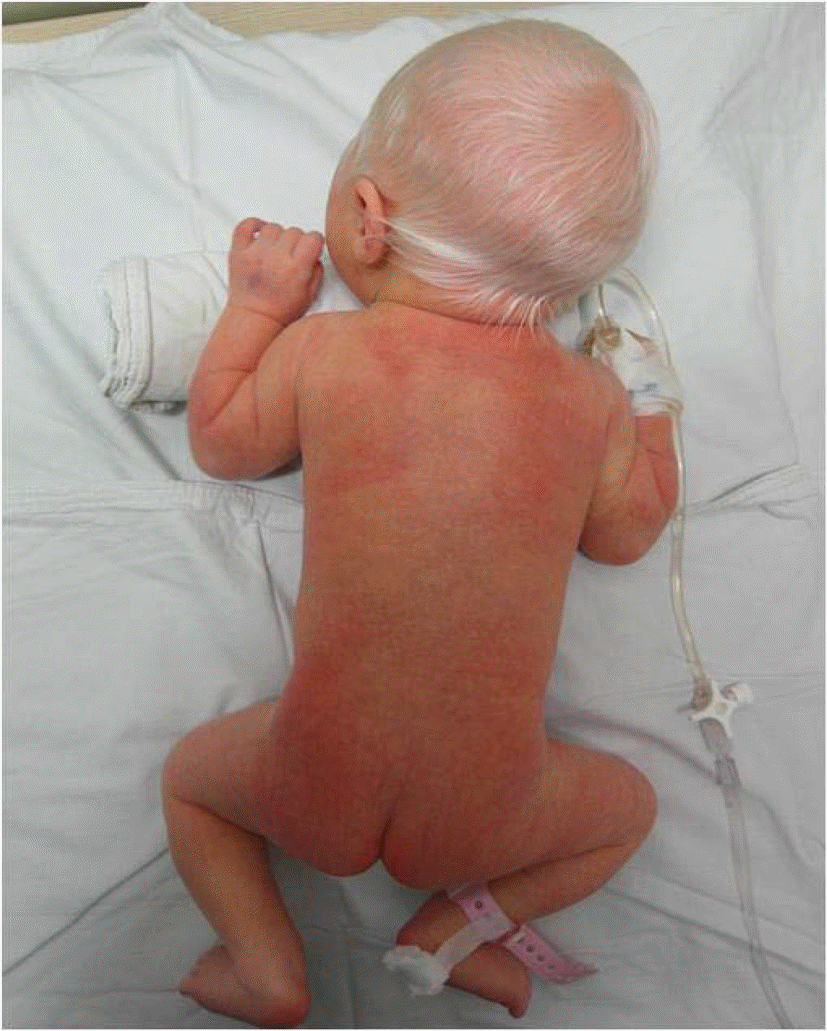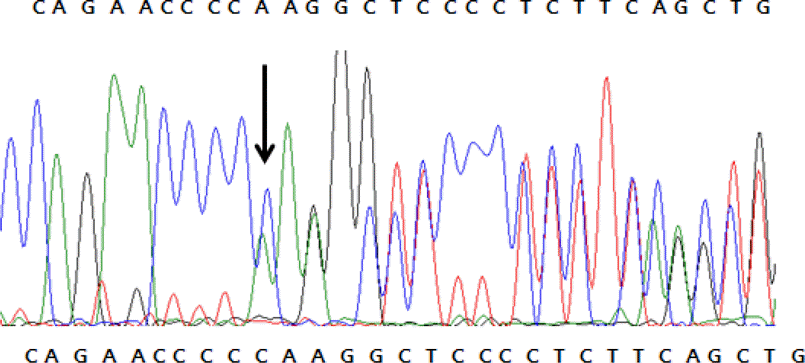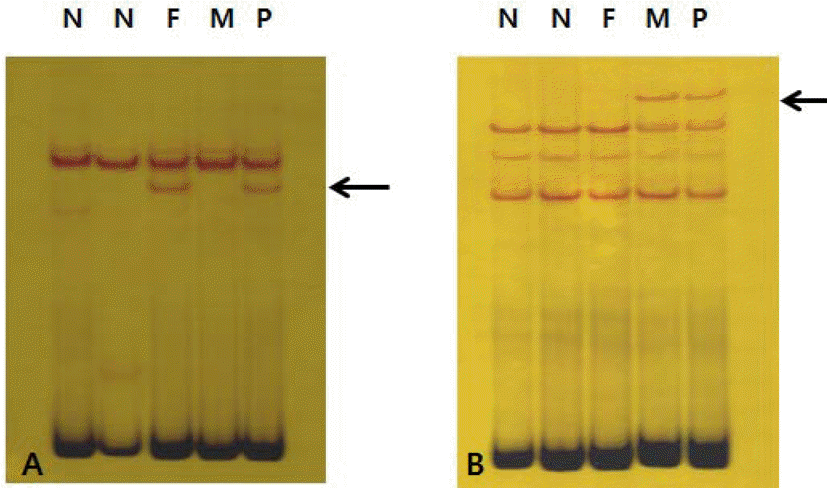Abstract
Oculocutaneous Albinism (OCA) is a heterogenous autosomal recessive disorder characterized by defective melanin biosynthesis. Physical findings including white scalp hair and depigmented skin of whole body in newborn infants are important clinical features of OCA 1. We report a newborn case of OCA 1 with two different TYR mutations, and gene defects of the baby revealed to be originated from both parents carriers of OCA.
REFERENCES
1). Grønskov K., Ek J., Brondum-Nielsen K. Oculocutaneous albinism. Orphanet J Rare Dis. 2007. 2:43.

3). Tomita Y., Miyamura Y. Oculocutaneous albinism and analysis of tyrosinase gene in Japanese patients. Nagoya J Med Sci. 1998. 61:97–102.
4). Goto M., Sato-Matsumura KC., Sawamura D., Yokota K., Nakamura H., Shimizu H. Tyrosinase gene analysis in Japanese patients with oculocutaneous albinism. J Dermatol Sci. 2004. 35:215–20.

5). Oetting WS., Fryer JP., Oofuji Y., Middendorf LR., Brumbaugh JA., Summers CG, et al. Analysis of tyrosinase gene mutations using direct automated infrared fluorescence DNA sequencing of amplified exons. Electrophoresis. 1994. 15:159–64.

6). Summers CG. Albinism: classification, clinical characteristics, and recent findings. Optom Vis Sci. 2009. 86:659–62.

7). Lee KY., Ban MS., Song BR., Yoo JH. A case of oculocutaneous albinism. J Korean Ophthalmol Soc. 2000. 41:288–93.
8). Oh DH., Park SH., Lee JK., Moon NJ. Clinical findings and results of low vision devices in pediatric patients with albinism. J Korean Ophthalmol Soc. 2011. 52:466–71.

9). Creel DJ., Summers CG., King RA. Visual anomalies associated with albinism. Ophthalmic Paediatr Genet. 1990. 11:193–200.

10). King RA., Pietsch J., Fryer JP., Savage S., Brott MJ., Russell-Eggitt I, et al. Tyrosinase gene mutations in oculocutaneous albinism 1 (OCA1): definition of the phenotype. Hum Genet. 2003. 113:502–13.
11). Oetting WS. The tyrosinase gene and oculocutaneous albinism type 1 (OCA1): A model for understanding the molecular biology of melanin formation. Pigment Cell Res. 2000. 13:320–5.

12). Park SH., Chae H., Kim Y., Kim M. Molecular analysis of Korean patients with oculocutaneous albinism. Jpn J Ophthalmol. 2012. 56:98–103.

13). Wei A., Wang Y., Long Y., Wang Y., Guo X., Zhou Z, et al. A comprehensive analysis reveals mutational spectra and common alleles in Chinese patients with oculocutaneous albinism. J Invest Dermatol. 2010. 130:716–24.

14). Hutton SM., Spritz RA. Comprehensive analysis of oculocutaneous albinism among non-Hispanic caucasians shows that OCA1 is the most prevalent OCA type. J Invest Dermatol. 2008. 128:2442–50.

15). Kim WJ., Kim SH., Jung DS., Ko HC., Kim MB., Kwon KS. A case of oculocutaneous albinism induced by tyrosinase mutation. Korean J Dermatol. 2009. 47:1291–95.
Fig. 2
Direct sequencing analysis. Heterozygous c.230G>A (CGG>CAG, p.Arg77Gln) (arrow) in exon 1 of theTYR gene.





 PDF
PDF ePub
ePub Citation
Citation Print
Print





 XML Download
XML Download